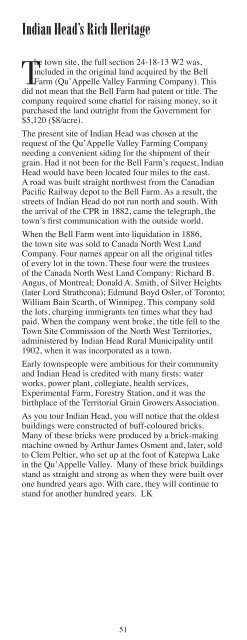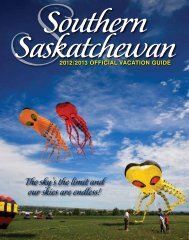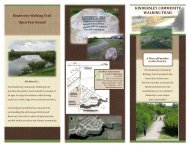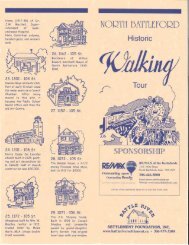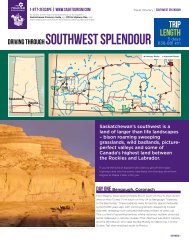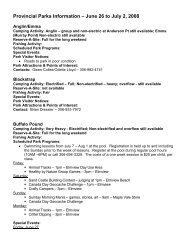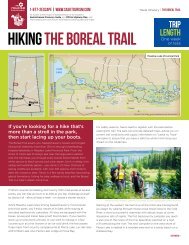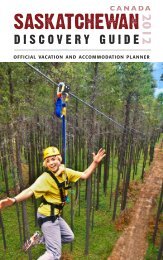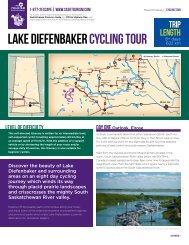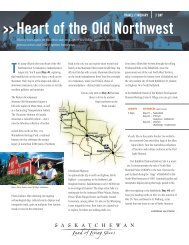Indian Head Walking Tour Brochure & Map.pdf - Tourism ...
Indian Head Walking Tour Brochure & Map.pdf - Tourism ...
Indian Head Walking Tour Brochure & Map.pdf - Tourism ...
You also want an ePaper? Increase the reach of your titles
YUMPU automatically turns print PDFs into web optimized ePapers that Google loves.
<strong>Indian</strong> <strong>Head</strong>’s Rich Heritage<br />
The town site, the full section 24-18-13 W2 was,<br />
included in the original land acquired by the Bell<br />
Farm (Qu’Appelle Valley Farming Company). This<br />
did not mean that the Bell Farm had patent or title. The<br />
company required some chattel for raising money, so it<br />
purchased the land outright from the Government for<br />
$5,120 ($8/acre).<br />
The present site of <strong>Indian</strong> <strong>Head</strong> was chosen at the<br />
request of the Qu’Appelle Valley Farming Company<br />
needing a convenient siding for the shipment of their<br />
grain. Had it not been for the Bell Farm’s request, <strong>Indian</strong><br />
<strong>Head</strong> would have been located four miles to the east.<br />
A road was built straight northwest from the Canadian<br />
Pacific Railway depot to the Bell Farm. As a result, the<br />
streets of <strong>Indian</strong> <strong>Head</strong> do not run north and south. With<br />
the arrival of the CPR in 1882, came the telegraph, the<br />
town’s first communication with the outside world.<br />
When the Bell Farm went into liquidation in 1886,<br />
the town site was sold to Canada North West Land<br />
Company. Four names appear on all the original titles<br />
of every lot in the town. These four were the trustees<br />
of the Canada North West Land Company: Richard B.<br />
Angus, of Montreal; Donald A. Smith, of Silver Heights<br />
(later Lord Strathcona); Edmund Boyd Osler, of Toronto;<br />
William Bain Scarth, of Winnipeg. This company sold<br />
the lots, charging immigrants ten times what they had<br />
paid. When the company went broke, the title fell to the<br />
Town Site Commission of the North West Territories,<br />
administered by <strong>Indian</strong> <strong>Head</strong> Rural Municipality until<br />
1902, when it was incorporated as a town.<br />
Early townspeople were ambitious for their community<br />
and <strong>Indian</strong> <strong>Head</strong> is credited with many firsts: water<br />
works, power plant, collegiate, health services,<br />
Experimental Farm, Forestry Station, and it was the<br />
birthplace of the Territorial Grain Growers Association.<br />
As you tour <strong>Indian</strong> <strong>Head</strong>, you will notice that the oldest<br />
buildings were constructed of buff-coloured bricks.<br />
Many of these bricks were produced by a brick-making<br />
machine owned by Arthur James Osment and, later, sold<br />
to Clem Peltier, who set up at the foot of Katepwa Lake<br />
in the Qu’Appelle Valley. Many of these brick buildings<br />
stand as straight and strong as when they were built over<br />
one hundred years ago. With care, they will continue to<br />
stand for another hundred years. LK<br />
51


